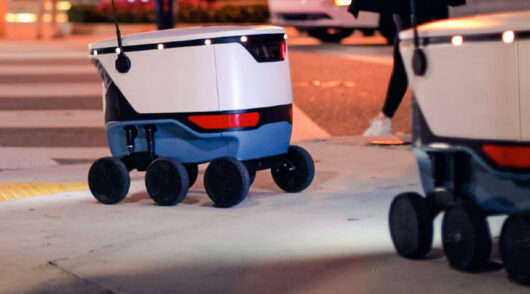Retail has changed forever. Since the outbreak of the Covid-19 pandemic and the resulting lockdowns and restrictions, consumer habits are no longer the same as they were before.
Online purchases have increased exponentially with global online sales reaching nearly US$4.29 trillion last year, which is 24 per cent more than the previous year. Asia Pacific accounted for a significant piece of the pie with a 62.6 per cent share. Furthermore, Euromonitor International projects that half of the absolute value growth for the global retail sector from 2020 to 2025 will be digital.
While some retailers have struggled with the accelerated shift to e-commerce, we have seen on the flipside, other retailers embracing entirely new mediums and platforms like video-sharing apps to engage customers in the digital space and grow brand affinity.
Concepts of loyalty and convenience have also been challenged like never before. In the past year, my neighbourhood supermarket lost out on our family grocery purchases to e-commerce providers and specialist organic food websites because we shopped online more.
In fact, over 60 per cent of global consumers have changed their shopping behaviours as they seek greater convenience and value. For example, 91 per cent of people in India and 64 per cent of people in South Korea have taken up new shopping behaviours since Covid-19, with over 60 per cent of them intend to stick with their adopted behaviour.
I expect to see these new consumer habits continue to shape retail in the coming years. To ride the wave of the e-commerce boom, retailers today need to incorporate the best digital tools and innovate in small steps.
Here are some of my reflections on how retailers in Asia can cater to new consumer habits, thrive amid the challenging circumstances and define the future of the industry.
Enabling retail offerings through e-commerce
Like many consumers everywhere, you and I now habitually visit bricks-and-mortar shops much less than before. According to Capgemini Research Institute, 59 per cent of shoppers worldwide said they had high levels of interaction with physical stores before Covid-19. Now, less than a quarter see themselves in that high-interaction category. Consumers have been pushed out of their “in-store comfort zone” and expect both small and large retailers to get online.
Bukalapak, one of Indonesia’s leading e-commerce platforms, has recognised this demand. It is adopting cloud technologies to support more than 12 million online and offline merchants and 100 million customers via a solution that scales consumer and merchant experiences with greater efficiencies.
Brands are also realising that with online digital experiences, they can cut across channels beyond the physical and bypass intermediaries to drive sales.
Peregrine Corporation serves customers with fuel, food and supplies across Australia. To provide greater convenience, it introduced an ‘On The Run’ app that facilitates a click-and-collect experience so customers can pay for fuel online without going inside a store. By combining Microsoft technology and an in-store database, Peregrine ensures that customers have a reliable and speedy experience, while employees benefit from real-time connectivity and improved efficiencies.
Winning consumer loyalty by turning data into a strategic asset
Even as traditional retail spaces transform to suit new habits, retailers will need to offer hyper-personalised, value-added customer experiences. They might even need to redesign supply chains by harnessing timely data insights.
When the pandemic hit last year, popular Indian e-commerce platform, Myntra, was able to instantly provide valuable insights to partner brands about changing consumers behaviors during lockdowns. Using machine learning, it analyses what shoppers are searching for, viewing and buying. For example, a growing number of customers, who were balancing work and household chores as they stayed at home, were buying clothes that were both functional and comfortable.
Businesses can also tailor robust consumer profiles developed with the help of artificial intelligence to individual needs.
Città is a small design company that creates and sells fine furniture in New Zealand and Australia. After gaining a complete view of its customers, it was able to improve product recommendations. A unified platform gives its team comprehensive, real-time data of its stocks, which helps the company fulfil all orders and deliveries promptly, building customer trust.
Consumer loyalty can be won – and lost – easily in our competitive landscape. Retailers must differentiate themselves and their offerings. It is as simple as paying attention to consumer needs, as well as their preferred means of purchase and engagement.
Driving growth securely and sustainably
Asia Pacific is set to account for almost half of global consumption by 2030. But with this promise of potential growth comes two important responsibilities for e-commerce retailers: security and sustainability.
Consumer data makes retail organisations a prime target for cybercriminals. According to Dimensional Research’s Retail Security Survey, 57 per cent of organisations said the increase in remote shopping has made security more challenging. Retailers will need to invest in secure infrastructure and engage a technology partner to facilitate centralised security management of different environments so that consumer experiences remain uncompromised.
Zozo Group operates Zozotown, one of Japan’s largest fashion shopping websites. It recognised that it needed to provide employees with a convenient and secure work environment to ultimately protect company confidentiality and its consumers. Zozo centralised control on a single console, drastically reducing the time needed to pinpoint any trigger that can raise the suspicious activity alarm. It also allowed a quick transition to telecommuting, with employees having a standardised work experience across home and the office.
On the issue of sustainability, consumers are increasingly eco-conscious and expect brands to demonstrate transparency and social responsibility.
The retail industry should play a significant role in reducing waste and greenhouse gas emissions. I am glad to see major retailers step up to help address this globally. Walmart, for one, has committed to achieving zero emissions by 2040, and H&M has pledged to use sustainably sourced or recycled materials by 2030.
I am also glad to see the rise of second-hand retailers — key in helping us consume more sustainably — enhance their offerings to stay relevant. Cash Converters, the largest second-hand retailer in Australia, is using analytics to allow customers to buy online, get quotes for items they are selling and apply for and manage loans through its website or app. Cash Converters is now well positioned to expand and contribute to sustainable consumption.
Taking the first steps toward digitisation
Asia Pacific represents about three-quarters of the world’s retail growth. With the region’s advanced digital maturity, it is set to remain the industry’s growth engine in 2021.
But success for retailers means closely tracking the pulse of fast-changing habits and expectations of today’s consumers. This begins with pivoting operations and mining new opportunities to serve needs and preferences that continue to evolve every day.






